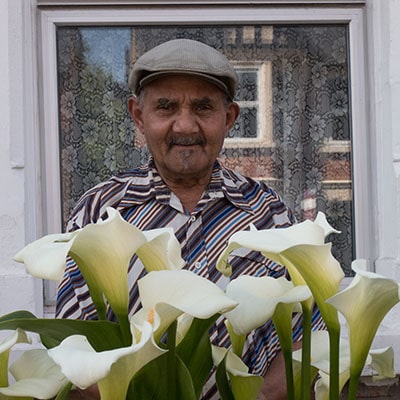Museum without walls: Meades vs Morris
Jonathan Meades is an architectural writer and TV programme maker. Museum without walls is a compilation of 54 articles and six television scripts written over a couple of decades and loosely organised around themes including place, memory, blandness, ‘edgelands’ and urban regeneration. He is an architectural writer who hates architects – the feeling is heartily reciprocated – who is really more interested in places, ‘the greatest of free shows’ as he calls them, than architecture as such.
Meades`s greatest strength as a writer is his strong opinions, quirkily expressed, what he calls ‘heavy entertainment’. Take architects: ‘If we want to understand the physical environment we should not ask architects about it. After all if we want to understand charcuterie we don`t seek the opinion of pigs’. (p13)
Meades can certainly be ‘on point’ as the Americans say and his debunking of some of the absurdities of the regeneration and architectural industries can be hilarious, even breathtaking. It is informed by a lot of hate though, and hate can only go so far. Reflecting the range of things he has written about, the regeneration gravy train, Letchworth’s dreary legacy, the futile vanity of’ landmark’ buildings, Birmingham’s beauty, why buildings are best left unfinished, shopping malls, Pevsner, Nairn and Sterling, he admits to a gamut of seldom submerged antipathies. “Beaverbrook observed that his father taught him to hate, to hate. I enjoyed no such tuition. I`ve had to teach myself. It comes easily enough when you are presented with such objects as good taste, Georgian timidity and the nasty bland synthetic-modern legacy of New Labour, made in the image of the grinning Tartuffish war criminal himself- but the happy Christmas day will come when our Christian bomber and his gurning hag magically mutate into the Ceaucescu’s of Connaught Square. (The house has a basement)” (p.xv)
In a way his writing style, not the ideas he is trying to convey, is the real purpose of the book. But for much of the time it doesn`t work. There is a great piece on the lower Lea Valley in East London before its sterilisation by the ‘entirely despicable, entirely pointless’ 2012 Olympics,. ‘..a festival of energy squandering, architectural bling worthy of a vain third world dictatorship’. He take time to describe the most extensive terrain vauge of any European capital city in ways which connoisseurs of ‘edgelands’ writing will be familiar with ‘… greasy carpet tiles, collapsing nissen huts, pitta bread with green mould, rotting foxes, caravans and washing lines, an oasis of scrupulously tended allotments..’ You get the picture. But instead of painting it, Meades beats the reader around the head with a single sentence running to a full page, with over forty examples. This is an example too of Meades`s obsession with lists. He starts off as insightful and ends up as tedious. The swagger and pose in his prose is endearing because so much written in the regeneration and architectural press can be little more than uncritical boosterism of what Meads calls ‘nursery colours’,’ toytown rustication’ and ‘a childrens entertainers garrulous importunacy,the kind of thing Owen Hatherley in A guide to the new ruins of Great Britain (reviewed in the JWMS Winter 2011) so winningly sends up. But Hatherley has the measure of Meades the contrarian, or as he calls him “the magic mushroom guzzling rationalist”. Self indulgence hardly does justice to Meades`s style. Any self-respecting editor would have taken a hatchet to a lot of this prose. Novelists are frequently entreated to “kill their babies” to make sure their work is readable. I can assure you that no babies were killed in the making of this book.
Meades likes to venture into the politics of architecture. He can be amusing and pointed. At its best his prose is peppered with bon mots. Stalinist architecture is low- brow. Nazi architecture is middle-brow. There is a section of the book on architects, some of whom he likes, others he loathes. In discussing and in discussion with, Zaha Hadid he makes a lot of good points about sexism in architecture especially in the UK (much less the case in France and Switzerland apparently) and takes an amusing sideswipe at the American now rather old, New Urbanists “.. begetters of crass kitchy retro-developments such as Seaside, Florida” (p363) and their British standard bearer Leon Krier. Krier went on from teaching Hadid at the Architectural Association to becoming the Prince of Wales`s architectural advisor and ‘then the brain (if that’s the word) behind such volkisch excresences of the New Urbanism as Poundbury, the cottagey slum of the future disgracefully dumped on a greenfield site on the edge of Dorcheste’ (p367).
Meades doesn`t like ‘that kind of thing’ at all, so the Arts and Crafts Movement and Garden Cities are fair game. Letchworth Garden City is pretty much dismissed because ‘the future mass-murderer Lenin went to inspect it’ (p103), though its real failings seem to have been that it exemplified ‘a generation of architects whose flock-like impetus was folksy, rustic, merry Englandish’ (p76 ) but his airy dismissals have a point. Nineteenth century suburbia was architecturally centripetal. It sought to join itself to the city. It used urban styles and urban planning. It acknowledged its link to the core of the city. Whether it was grand like Bayswater or humble like Bow, it looked inwards. Bourneville, Port Sunlight, Letchworth didn`t. Not surprisingly Morris comes in for the full treatment. Dismissed as part of the “officer-class gullible” along with Ruskin, Carlyle, Matthew Arnold, H.G. Wells and George Bernard Shaw and that “well intentioned old fool Ebenezer Howard”, Meades cuts a swathe through the Arts and Crafts Movement, “Never was Never Never Land more persuasively realised than by the rurally fixated, childlike luddite of the Arts and Crafts. Never was twee, cutesy, unthinking saccharine, smiley, eager-to-please, easy-on-the-eye winsomeness, carried off by a greater genius than the young Lutyens.” (p103) Predictably Morris is dismissed as someone “who thought expensive wallpaper was going to change the world”. Meades likes to have a go at Morris. Interspersed amongst the articles and polemics are some film and television scripts. One, Victoria died in 1901 and is still alive today is a glorious confection of stereotype and prejudice mixed in with insight and humour. This is Morris; ‘You know the type. He was a cerebral Conran who propagated the art of living in the Middle Ages rather than the art of living in France [Meades lives in France]. He was the River Cafe with a beard.’ and ‘Morris was forever trying to recreate his childhood which had been a prelapsarian commune with nature, baking hedgehogs in clay and riding a pony dressed in a suite of armour – as one does. We all had a childhood. What is peculiar about Morris was his desire to inflict his childhood on a nation. What was even more peculiar is that he succeeded.’ (p202) It is probably fair to say that political analysis is not one of Meades’s strong points. A debate between him and say Jeremy Deller on Morris’s relevance in the 21 Century would be instructive, if a bit one-sided.
In the end Museum without walls is both an amusing and an irritating romp through some of the key issues facing architects, planners, regeneration types and anyone interested in ‘place’ or the built environment. But it shows its origins. What would be an hilarious article in the Sunday Telegraph magazine or a thought-provoking if wacky programme on modern architecture on More 4, when brought together at great length, really does not translate into a successful book. At half the length it might have worked, but his editors didn`t kill those babies.
This article first appeared as a review in the Journal of William Morris Studies Vol 20 no 3 Winter 2013.

